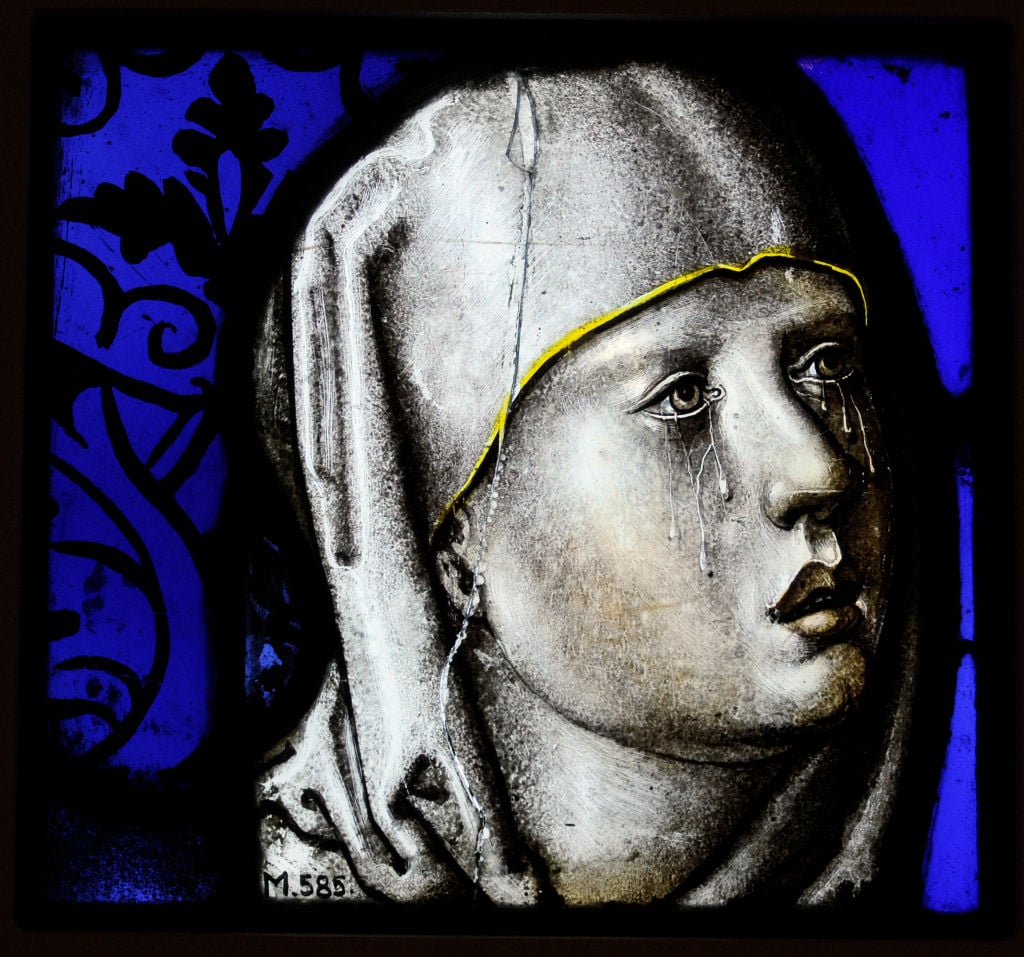Pop Culture
Is a TikTok Famous Statue of the Virgin Mary Really Crying?
Scientists have offered up their own explanations for this surprising phenomenon.

Scientists have offered up their own explanations for this surprising phenomenon.

Jo Lawson-Tancred

A congregation of churchgoers in Mexico may have borne witness to a real-life miracle… or did they? Visitors were shocked and moved when a statue of the Virgin Mary appeared to shed real tears. The event has been dubbed a “miracle,” but is there a more scientific explanation?
The sobbing statue has become something of a local icon, drawing crowds to a church in the town of El Chanal, Colima, Mexico. If seeing is believing, viral videos on social media do clearly appear to show droplets falling from the corner of the Virgin’s eyes and rolling down her cheek.
Virgin Mary statue is filmed "crying" by awestruck worshippers in Mexico pic.twitter.com/t92voTwRw1
— Citizen Free Press (@CitizenFreePres) November 15, 2023
Searching for a reason for this unexpected emotional outburst, some worshippers believe it may be signal that the Madonna is praying for reconciliation and goodwill during a turbulent time. “Peace, may she give us peace in Colima and throughout the world,” were the hopes of one visitor Maria Mercedes Hernandez, according to the Metro.
Skeptics, however, have put forward another explanation. Professor Luigi Garlaschelli, an expert in chemistry from the Italian University of Pavia, believes that the statue is actually filled with water that is being slowly emitted because the statue is made of a porous material.
“You need a hollow statue made of plaster or ceramic, which must be covered on the outside with a waterproof layer,” he said. “By filling the statue with water through an imperceptible hole at the top, the porous material will absorb it, but the outer layer will prevent it from coming out.”
“However, if a slight scratch is made in the protective glaze in the tear duct area, the absorbed water will come out through it as if it were tears,” he said, seeming to suggest that the miracle may simply be an impressive publicity stunt.
Garlaschelli has exposed fake weeping Virgins before. A famous example concerns a Madonna in Syracuse, Sicily, that started crying in 1953. Though there have been many similar claims across the world, she was the only instance that was officially recognized by the Catholic Church.
The myth was debunked by Garlaschelli in 1995, who offered the same explanation. “Examination of a copy of this bas-relief from the same manufacturer as the original, however, proved it to be made of glazed plaster and to possess a cavity behind the face,” he noted, according to The Independent.
For those who wish to suspend disbelief, it may be a comfort to know that Garlaschelli was never able to inspect the actual statue itself, which is kept behind a glass partition. “I think permission won’t be granted to examine it,” he wryly said. “Many of these relics are not allowed to be examined.”
More Trending Stories:
Conservators Find a ‘Monstrous Figure’ Hidden in an 18th-Century Joshua Reynolds Painting
A First-Class Dinner Menu Salvaged From the Titanic Makes Waves at Auction
The Louvre Seeks Donations to Stop an American Museum From Acquiring a French Masterpiece
Meet the Woman Behind ‘Weird Medieval Guys,’ the Internet Hit Mining Odd Art From the Middle Ages
A Golden Rothko Shines at Christie’s as Passion for Abstract Expressionism Endures
Agnes Martin Is the Quiet Star of the New York Sales. Here’s Why $18.7 Million Is Still a Bargain
Mega Collector Joseph Lau Shoots Down Rumors That His Wife Lost Him Billions in Bad Investments